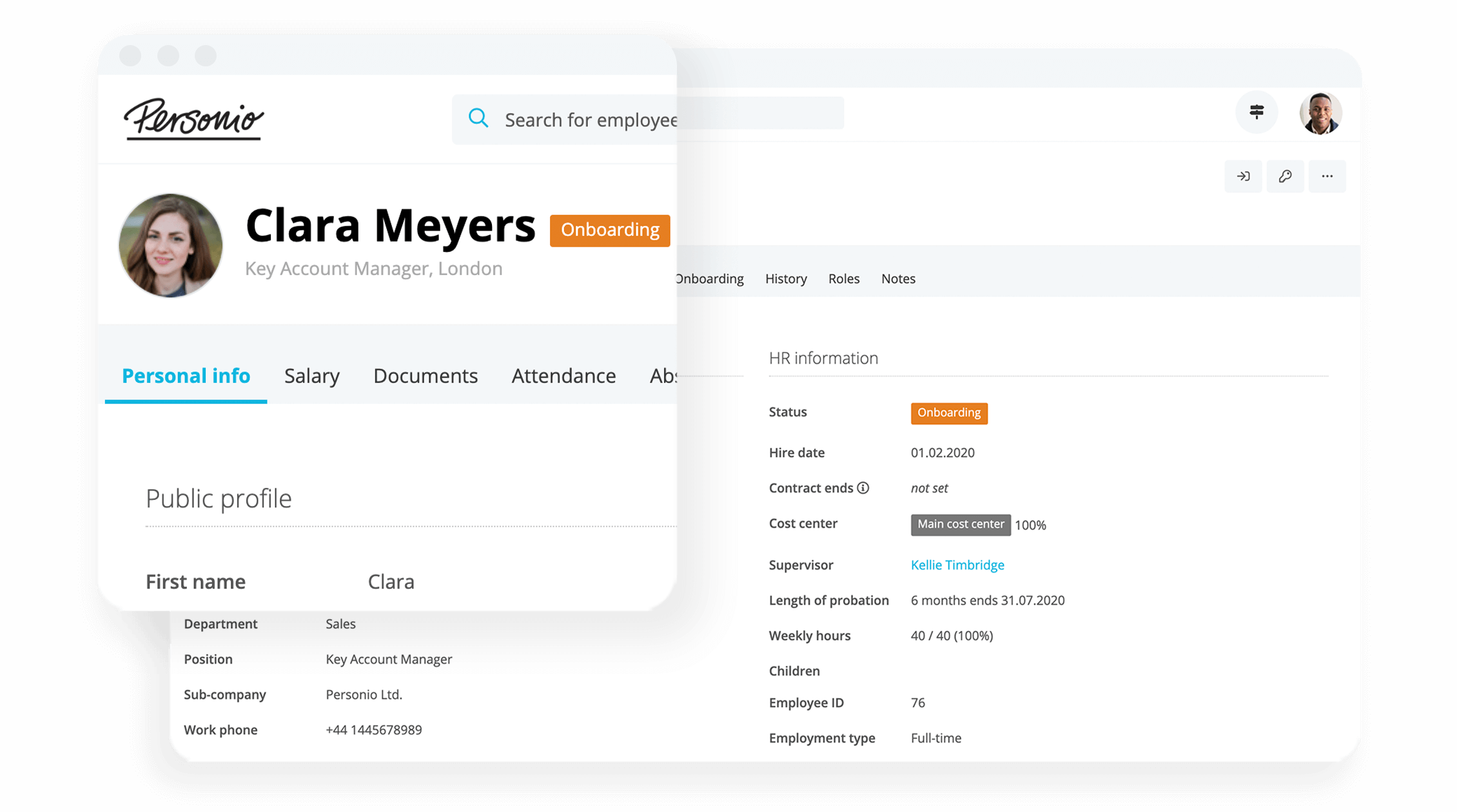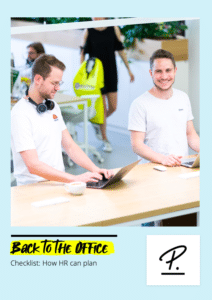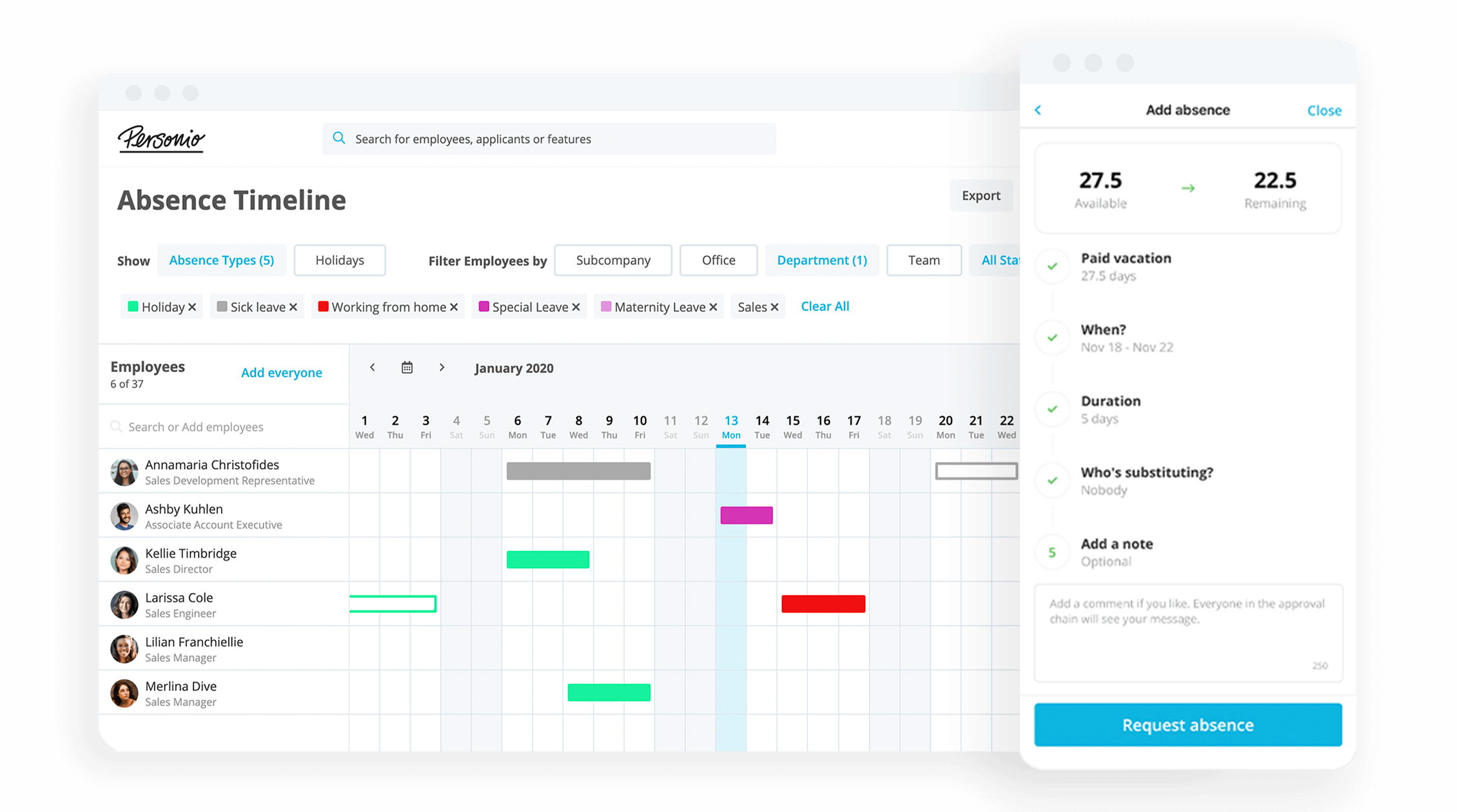When it comes time to put a phased return to work in place for your employees, being careful is going to be key. Some of your employees may be nervous, and some may not want to come back at all, so you need a plan to prepare.
While preparing, some common questions will likely arise: What is a ‘phased return to work’? Is it necessary? How can HR managers make sure it happens as smoothly as possible? In this article, we will answer each to help keep you prepared.
Start by downloading our back-to-the-office checklist right now.
Contents
What Is a ‘Phased Return to Work’?
Is a Phased Return to Work Necessary?
How Do You Do a Phased Return to Work Safely?
Why Is it Important to ‘Phase’ the Way People Come Back to Work?
How Can HR Managers Make Employees’ Return to Work as Smooth as Possible?
How Do You Actually Convince People to Come Back to Work?
Last Words: Helpful Things to Read for a Successful Phased Return to Work
What Is a ‘Phased Return to Work’?
A phased return to work involves the systematic return of an employee who has been absent for an extended period of time. This typically includes reduced hours, a lighter workload, or a different set of duties entirely. The return process typically lasts anywhere between two to six weeks.
The process itself also requires a fair amount from organizations. After all, you will need to figure out which employees will work from which locations, when, and ensure your offices are able to accommodate their return.
As the health and safety software company, AI Solutions, puts it, “A phased return to work plan offers the best opportunity to get all employees back at work and fulfil most, or at least the ‘core’, business needs”.
Traditionally, a phased return to work is put in place after an employee’s extended absence from the workplace. This could happen after a period of illness or when they return from maternity leave.
In these circumstances people are:
- Often given light duties
- Only asked to work reduced hours
- Given certain limitations to help them adjust
In some cases, they might even require the workplace to be adjusted, on the recommendations of a doctor.
When it comes to a Covid-induced phased return to work, the emphasis is more likely to be on keeping the whole workplace safe and supported: Physically, mentally, and emotionally.
Onboarding & Returning Go Hand In Hand
A return to work can often feel like a re-onboarding. Ensure that all of your tasks and reminders are in place for employees, to ensure a smooth return to great work.
Is a Phased Return to Work Necessary?
In short, yes. The longer employees have been working from home, the harder it is likely to be for them to adjust to being back in the office.
Having a phased return to work plan makes it easier for everyone to prepare, adjust, and know what to expect.
This will even be true after the pandemic is long over. Especially for companies who will remain remote in some way, shape, or form (through hybrid forms of work).
You can also read these helpful articles about helping your employees feel more comfortable and confident returning to a new normal.
- Back to Office Life: 8 Lessons for Adjusting to the New Reality
- 5 Impulses: How to Navigate the (Post-)Crisis Successfully
- Personio’s own insights into working from home (and beyond)
How Do You Do a Phased Return to Work Safely?
Start by creating a phased return to work plan. That can begin by making sure that you’ve answered these questions…
Who should be in the office at the same time?
It’s helpful to create plans that allow team members who usually work together to do so.
What health and safety requirements need to be put into place?
Offices may need to be adjusted to put more space between desks, to remind people to wash their hands and keep their distance, and to restrict the total number of people allowed in meeting rooms.
How do people move between areas?
It’s important to keep a safe distance when going to the kitchen, the bathroom, or even when passing in corridors. There’s no point in allowing 50 people into the office if it would take an hour each way for them all to go up or down a lift.
How do employees interact with each other?
Make it easy (and culturally acceptable) for employees to maintain the distance between each other that feels comfortable (in addition to any legal requirements your country’s health department may have imposed). One way of doing this is to provide a visual cue.
For example, the company Social Bands have created color-coded wristbands to help people show how comfortable they are getting close to other people when they return to the office.
Easily Prepare For An Office Return
When creating your own plan, you might also find it helpful to download our checklist: Back to the Office. In it, we include examples of how we have helped people enjoy a safe phased return to work.
Why Is it Important to ‘Phase’ the Way People Come Back to Work?
Although Covid-19 is an exceptional circumstance, the same principles of change management and safety apply as in any other return-to-work circumstance.
It’s important to help people come back to work in a way that is not overwhelming for them.
Here are some tips to help you phase it right:
- Increase their activity gradually (especially if they have been sick).
- Create a ‘return to work pathway’ that allows them to do less stressful work, initially (or – in the Covid context – allow healthy employees to do the most necessary and meaningful work sooner).
- Allow flexible working.
- Be patient.
- Remember that everyone is struggling.
How Can HR Managers Make Employees’ Return to Work as Smooth as Possible?
When we interviewed Nick Matthews, VP and GM of Culture Amp, the people and culture platform about how companies are adapting their employee engagement and performance strategies during the Coronavirus crisis, one of the insights that emerged was the importance of listening to employees.
This is also one of the key points about how to implement a phased return-to-work plan. When combined with these other listed steps, you’re far more likely to keep employees as happy and safe as possible on their return:
- Have a proposed plan
- Listen to your employees
- Address their concerns
- Revise the plans if necessary
- Explain how it will work safely and securely
- Help them understand why it’s good for them and the company
How Do You Actually Convince People to Come Back to Work?
Lastly, it’s important to remember that returning to work might be scary for people. It’s a change, just like any other that might require HR leaders to use a change management process.
Fortunately, as we discuss in this HR Lexicon article on change management, HR leaders are often great at managing change – or being involved in the change management process. In fact, at Personio we believe that HR leaders are advisors, mediators, and initiators.
So don’t forget to use the principles of people management that we describe in our blog post: How Can ‘People Management’ Principles Get the Best out of Your Workforce when putting a phased return to work plan in place.
A good people manager knows that getting things done and delivering results is only part of what makes an organization great. Creating workplaces that encourage people, motivate them, and help them bring their best selves to work is even more important (in our opinion).
When you’re preparing people for a phased return to work, remember these change management steps in the ADKAR model. You’ll need to create:
- A – Awareness of the need to change
- D – Desire to support the change
- K – Knowledge of how to change
- A – Ability to demonstrate skills and behaviors
- R – Reinforcement to make the change stick
Track Who’s In And When
Attendance tracking with Personio means your HR team can keep on top of all working times and a safe return to work. Click the button below to see it in action.
Last Words: Helpful Things to Read for a Successful Phased Return to Work
These days, people have good reason to be legitimately scared of returning to work if they don’t feel safe. Do your best, explain that you’re doing your best, and be prepared to adapt your plans based on what people say and you’ll go far!
And, if you find yourself feeling overwhelmed by the many HR responsibilities of this new world, please reach out! At Personio we can’t necessarily make your employees feel safer in your office, but we can take away the pain of onerous and overwhelming HR tasks.
Get in touch with us today by booking a personalized web demo and we’ll show you how you can spend less time on admin and more time on what matters most: people and strategy.
Help Ensure A
Great Work Return







